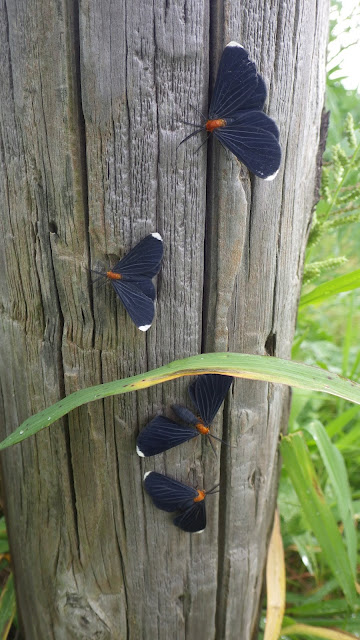Lately our office has been getting calls about lawn pests. A common pest in row crops, forages, pastures and lawns are armyworms. This insect lays eggs in clusters of about 50 eggs. Once the larvae hatch, they molt 5 times before pupating to the adult moth. The entire life cycle only takes about 28 days during warmer temperatures. The larvae cause damage to a variety of plants, and are commonly seen in lawns this time of year. Caterpillars tend to feed either in the late evening or early morning, so it's unlikely that you'll see the insect causing the damage. They feed on the foliage of the plants, chewing the green layer off the leaves. This leaves a "window pane" on the leaves. The first three stages the larvae goes through cause only minor damage, while the fourth and fifth stages cause much more damage, consuming up to 85% of their total foliage diet in these stages. A wide variety of predators consume armyworms. One of my most recent questions was on parasitoid wasps laying eggs in the armyworm egg masses. Ground beetles, other wasps, flies, and birds feed on them as well.
 |
| Fall Armyworm Egg Mass Photo: Kate Harrell |
 |
| Fall Armyworm Larva Photo: Kate Harrell |
 |
| Fall Armyworm Larva Photo: Kate Harrell |
If the number of larvae becomes high and the damage in a yard is excessive, treatment may be necessary. Two insecticides, halofenozide (on small caterpillars), and spinosad are specific insecticides that are easier on beneficial populations. Bifenthrin, carbaryl, esfenvalerate, and permethrin are also commonly used to control armyworms.
Feel free to email me or call our office if you have any questions or concerns.
Sincerely,
Kate Harrell















